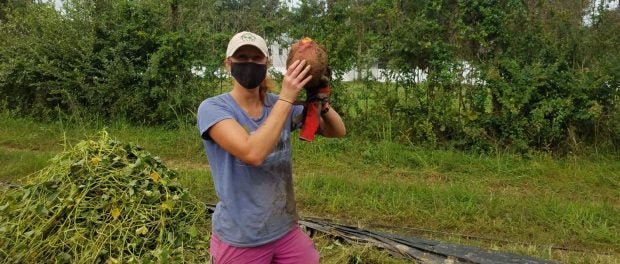Coronavirus Assistance for Farmers

Coronavirus Assistance for Farmers is Available through the Coronavirus Food Assistance Program – Program Applications Reopen Beginning on April 5th, 2021.
Has your operation been directly impacted by the coronavirus pandemic? USDA is implementing updates to the Coronavirus Food Assistance Program for producers of agricultural commodities marketed in 2020 who faced market disruptions due to COVID-19. This is part of a larger initiative to improve USDA pandemic assistance to producers.
USDA’s Farm Service Agency will accept new and modified CFAP 2 applications beginning April 5.
Coronavirus Assistance for Farmers
U.S. Secretary of Agriculture Tom Vilsack announced an expansion of the Coronavirus Food Assistance Program (CFAP) on March 24, 2021. This is part of a larger effort to reach a greater share of farming operations and improve USDA pandemic assistance. FSA has committed at least $2.5 million to establish partnerships and direct outreach efforts intended to improve outreach for CFAP 2 and will cooperate with grassroots organizations with strong connections to socially disadvantaged communities to ensure they are informed and aware of the application process. CFAP updates include reopening of Coronavirus Food Assistance Program 2 (CFAP 2), additional payments for eligible cattle and row crop producers, and the processing of payments for certain applications filed as part of CFAP Additional Assistance.
Eligible Commodities
Commodities eligible for the current Coronavirus Food Assistance Program signup period include those that were originally eligible for CFAP 2 and commodities included in CFAP Additional Assistance. Cattle producers who applied for CFAP 1 will automatically receive additional payments. Learn more about the commodities you grow or raise at https://www.farmers.gov/pandemic-assistance/cfap.
CFAP 2 payments will be made for three categories of commodities – Price Trigger Commodities, Flat-Rate Crops, and Sales Commodities. Eligible commodities for each category are outlined below.
Price Trigger Commodities
Price trigger commodities are major commodities that meet a minimum five-percent price decline over a specified period of time. Price trigger commodities eligible for CFAP 2 are outlined below.
- Broilers and eggs
- Crops: barley, corn, sorghum, soybeans, sunflowers, upland cotton, and all classes of wheat.
- Dairy (cow’s milk)
- Livestock: beef cattle, hogs and pigs, and lambs and sheep. Breeding stock are not eligible for CFAP 2.
Flat-Rate Crops
Flat-rate crops either do not meet the five-percent price decline trigger or do not have data available to calculate a price change. They include alfalfa, amaranth grain, buckwheat, canola, Extra Long Staple (ELS) cotton, crambe (colewort), einkorn, emmer, flax, guar, hemp, indigo, industrial rice, kenaf, khorasan, millet, mustard, oats, peanuts, quinoa, rapeseed, rice, sweet rice, wild rice, rye, safflower, sesame, speltz, sugar beets, sugarcane, teff, and triticale.
Sales Commodities
Sales commodities eligible for CFAP 2 include specialty crops, aquaculture, nursery crops and floriculture, and other commodities not included in the price trigger and flat-rate payment categories. They include:
- Aquaculture
- Dairy (goat’s milk)
- Floriculture and Nursery Crops:
- Cactus
- Christmas trees
- Floriculture
- Nursery crops
- Pullets
- Specialty Crops:
- Fruits
- Honey
- Horticulture
- Maple sap
- Tree Nuts
- Turfgrass Sod
- Vegetables
- Specialty Livestock
- Tobacco
- Wool
Learn more and apply for Coronavirus Assistance for Farmers through CFAP 2 at https://www.farmers.gov/pandemic-assistance/cfap






 Your Privacy Choices
Your Privacy Choices
Leave a comment